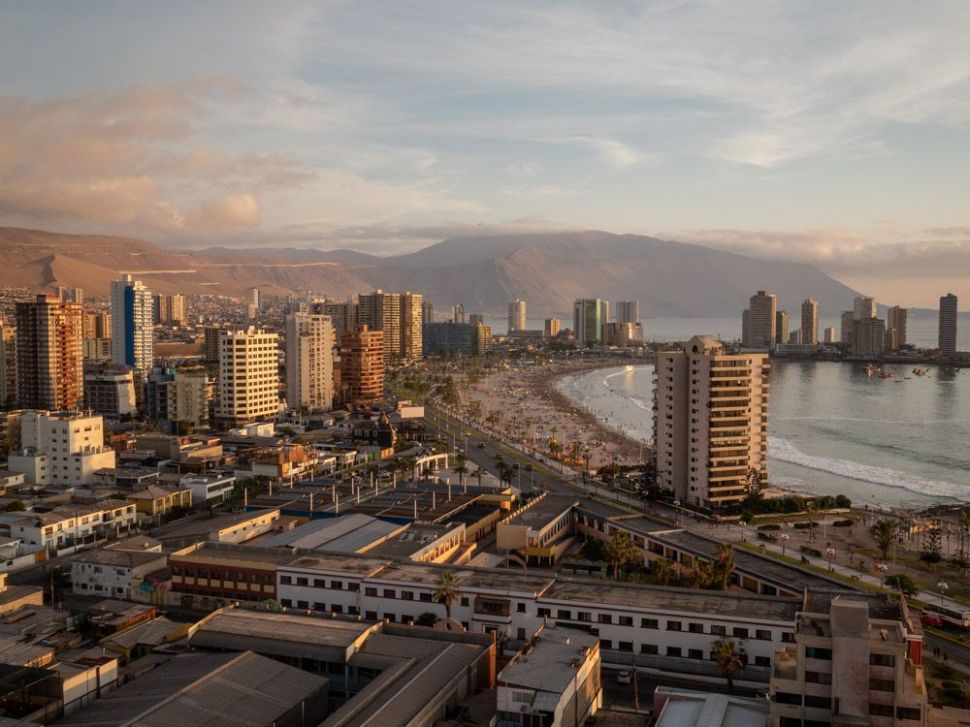On the Open Road
The souped-up Volkswagen pickup truck humming underneath us, we drove outside of the city into a small, unassuming valley ready to begin our first real road trip since leaving the United States. Our first stop on the journey introduced us to oldest known mummies in the world—thousands of years older than the oldest Egyptian mummies. The creation of Chinchorro mummies involved a complicated and extensive removal of all organs and tissues, with the skin placed back over the bones, surrounded by sticks and grass to give shape back to the body. A black clay mask and sometimes a chest plate was placed on top of the carefully prepared mummy.
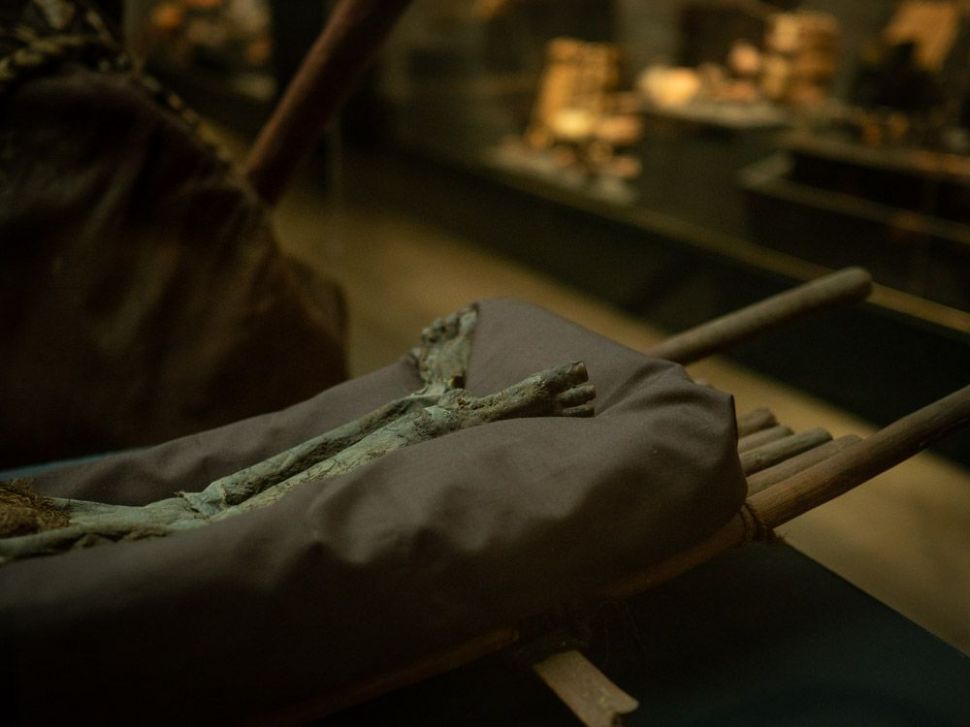
Hunger and the prospect of eating subpar camping meals for the next few days brought us just down the road to a little restaurant with name roughly translated to “Little Dead Boy’s Snack Bar”. It’s highly recommended, at least for the area, so we dropped in for lunch. Afterwards, a large, colorful, and sprawling cemetery caught our eye. We spent the better part of an hour seeing how Chileans in this part of the country buried their loved ones for the past 100 years. It would be first of several hauntingly beautiful, unique cemeteries we visit in this part of the country.
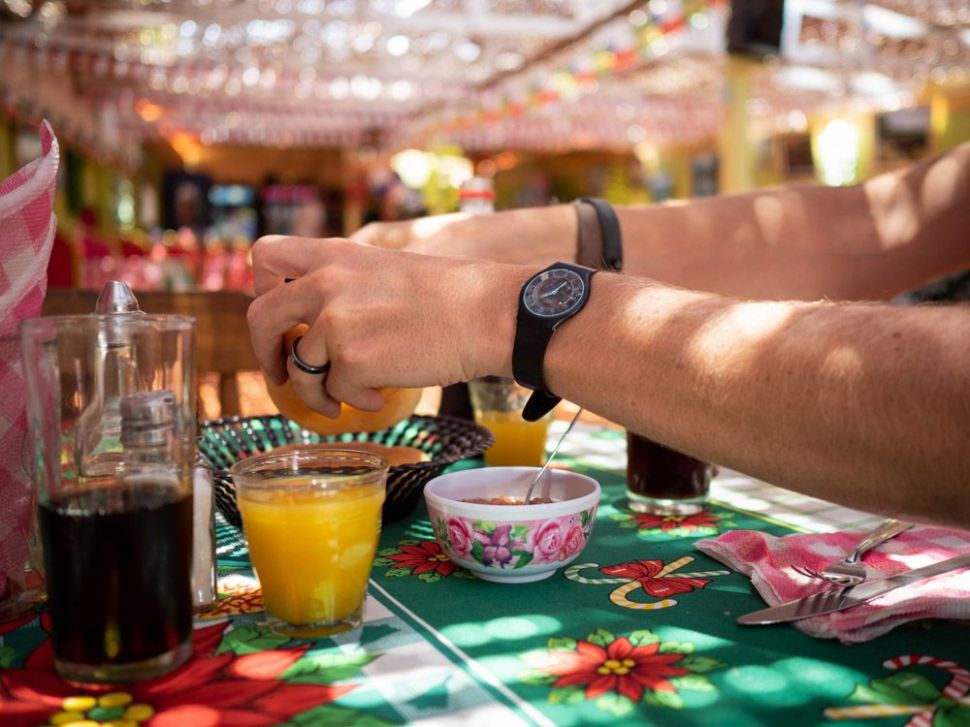
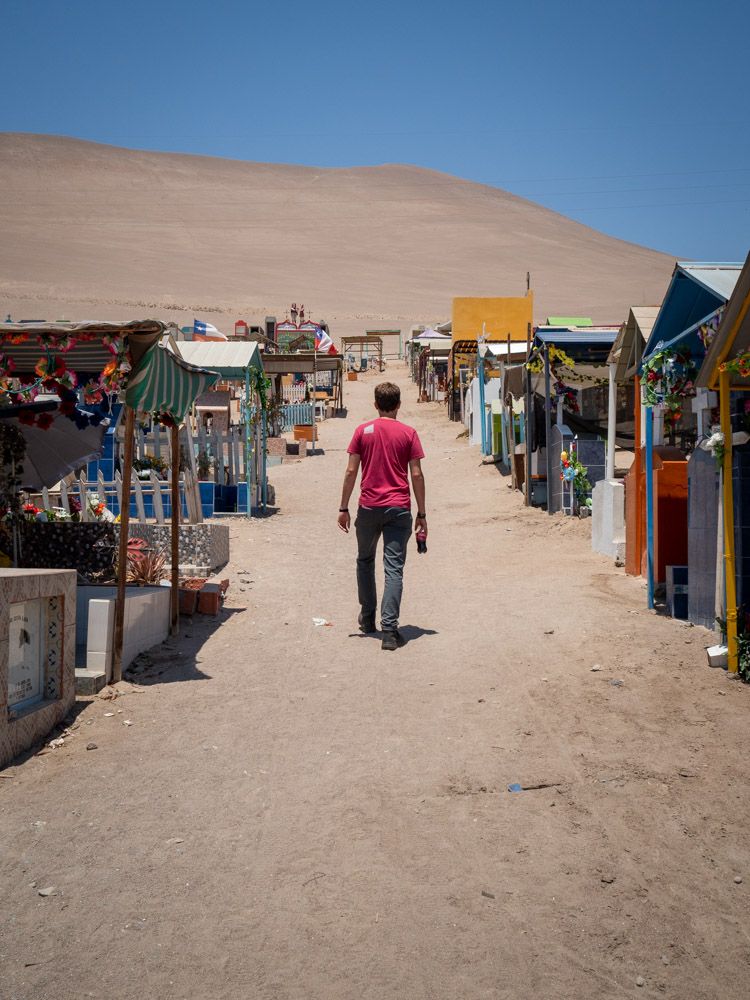
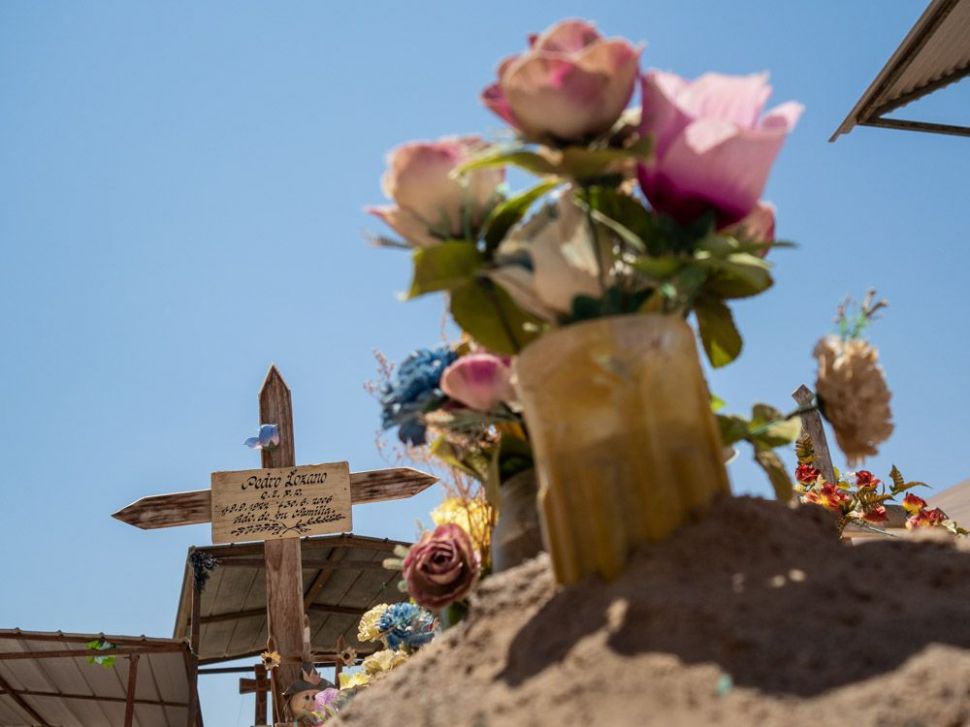
After leaving this incredible museum on the edge of a grand desert, we drove along a steep and winding road leading ever-higher from the coast nearby. For miles, the landscape is unimaginably barren, except for the rampant eighteen wheeler barreling down the highway—the main thoroughfare between Bolivia and the ocean. We edged ever closer to Bolivia. Though this trip, like our travel in Peru, brought us close to the border, we still never crossed.
Many miles and a few ancient ruins later, we rolled into the sleepy town of Putre. This village serves as an access point to exploring the national parks in the region. Despite our late arrival, we spent the remaining hours ‘til sunset walking through the town, popping into a few small shops, and simply enjoying the views.
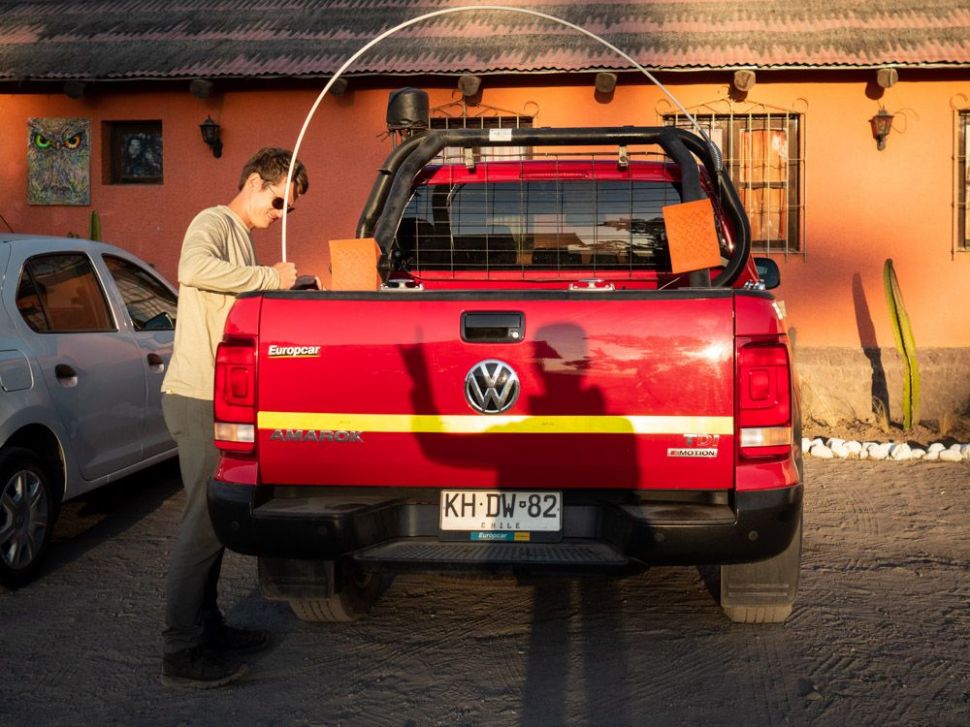
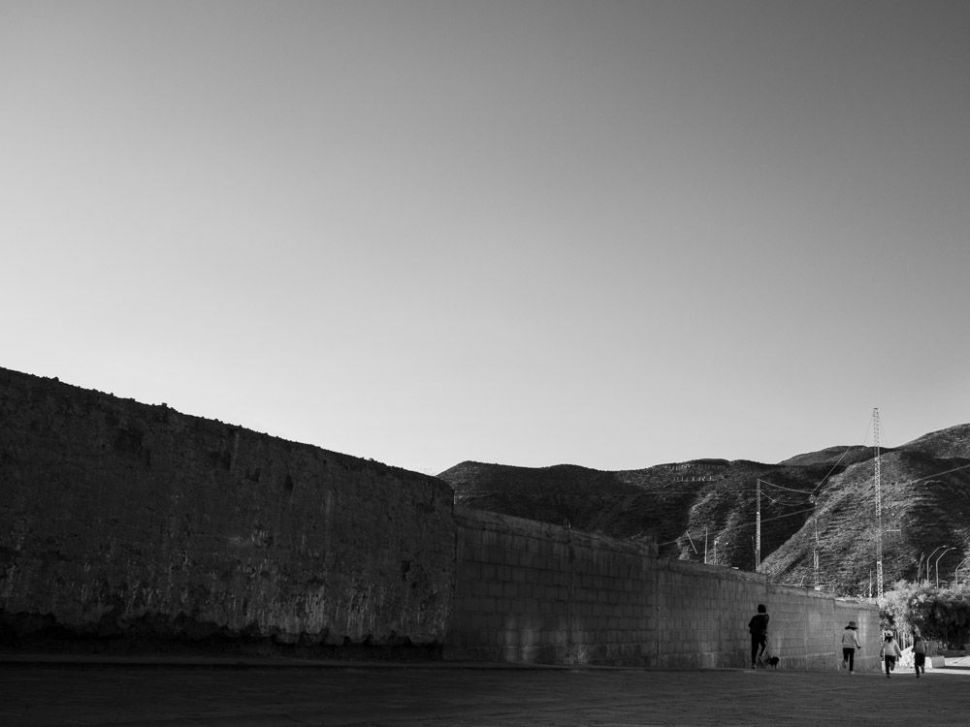
The next morning, we hit the empty road and headed towards the national park, Parque Nacional Lauca. As soon as we began approaching the border of the park, towering volcanoes grew from the horizon. On average, the elevation of the park falls somewhere between 14,000-15,000 feet. We would excitedly stop the car and I would move a little too quickly snapping photos, and instantly be gasping in the thin air. A series of dirt and paved road led us to the small, small town of Parinacota. We browsed, and eventually bought, the best made and softest alpaca sweater we’d seen in all of South America.
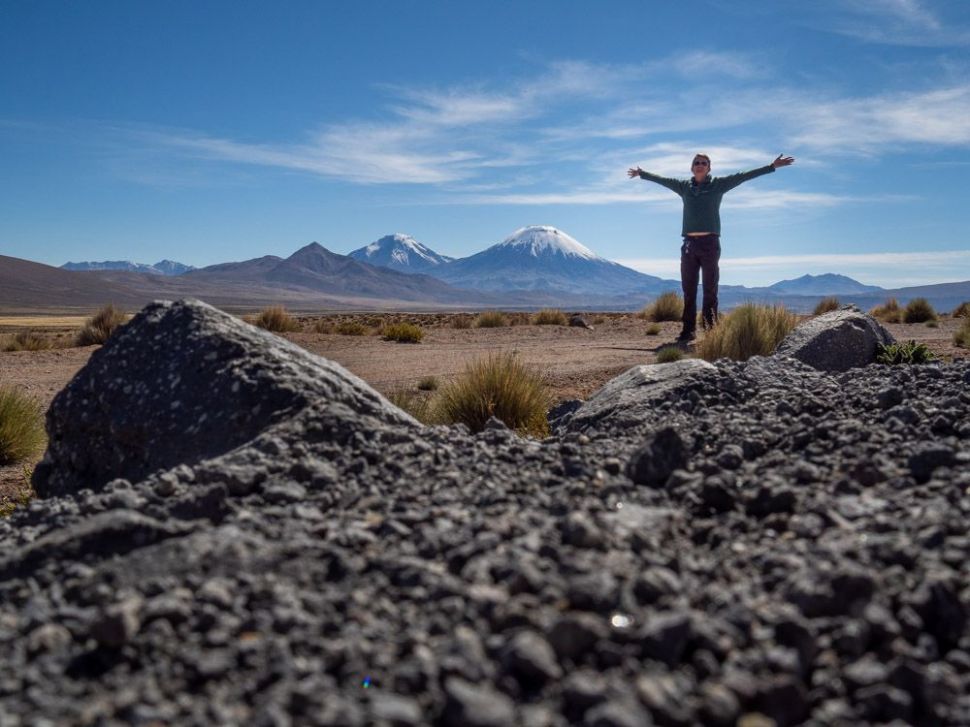
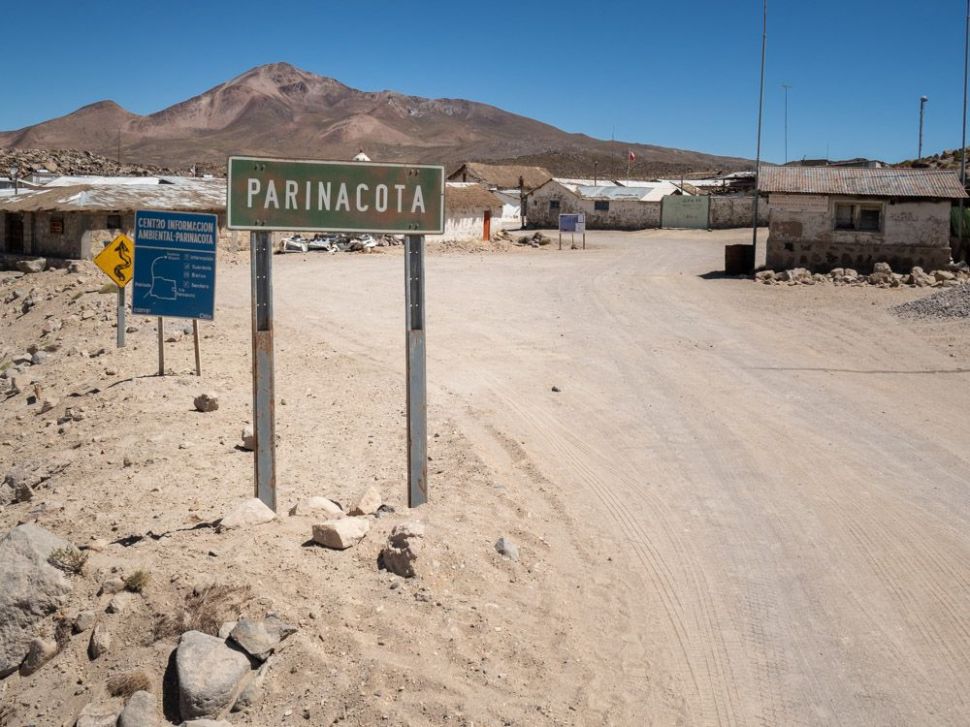
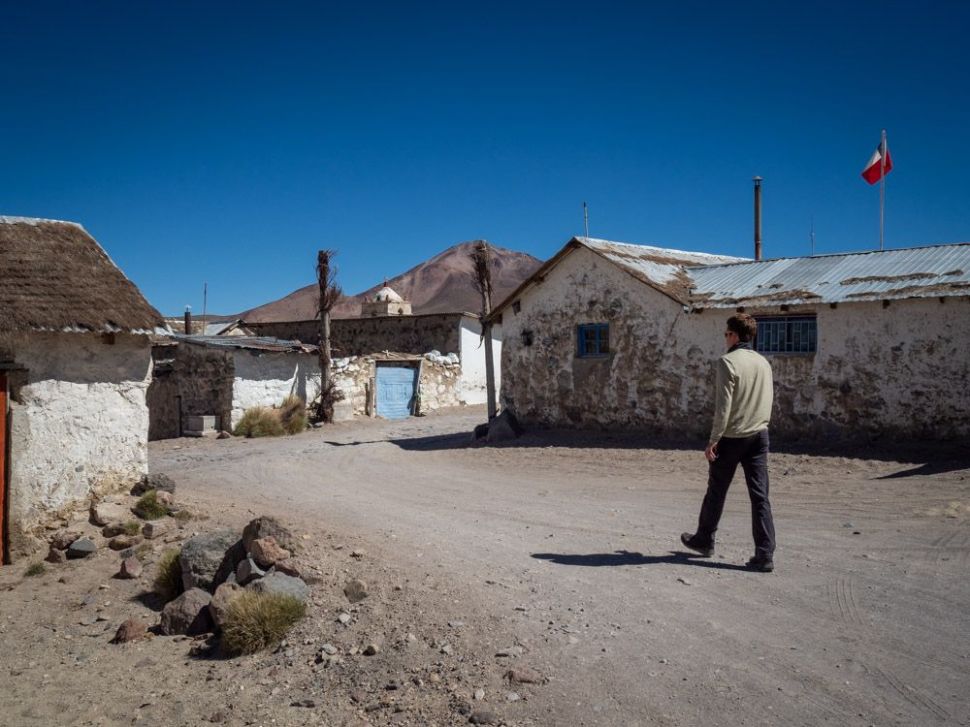
Chatting with the woman who sold us our great find, we asked if it might be possible to see inside the local church. We’d learned from the show that the church housed an infamous table. It was said that the table could move on its own at night, and whoever’s doorstep it appeared at in the morning was doomed to death. So it was decided to keep the table tied to the wall. She affirmed it was a beautiful church, but the only key inside was in the pocket of a local man currently visiting Arica for the day. That was always the excuse whenever we were looked for someone. No está, fue Arica—they’re not here, they went to Arica.
By the end of this trip, it would feel as if everyone was always in Arica. Although we didn’t get to see inside the church, that didn’t mean the excitement in town was over. A SUV with the Chilean equivalent of the FBI slowly pulled into the plaza. Three people in suits exited the vehicles and waved at us while we stared in confusion as they walked towards the church. I half-expected TV cameras to be set up around the plaza preparing to film the next episode of some cop drama, but I suppose we were seeing a real investigation. Unfortunately, I still have no idea what they were looking at, and they soon moved on from the town. Probably back to Arica.
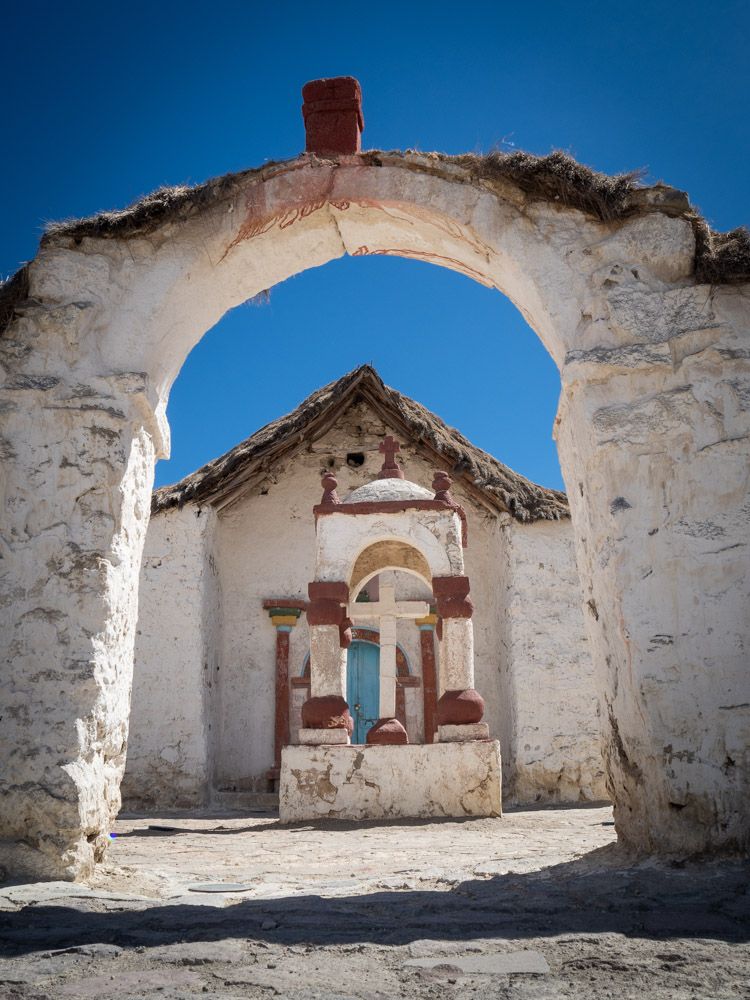
The next few hours involved some wonderful combinations of alpacas, lakes, and volcanoes. Oh, and so many flamingos! We’ve now stumbled into two areas of the world lousy with flamingos and it’s been a fun surprise.
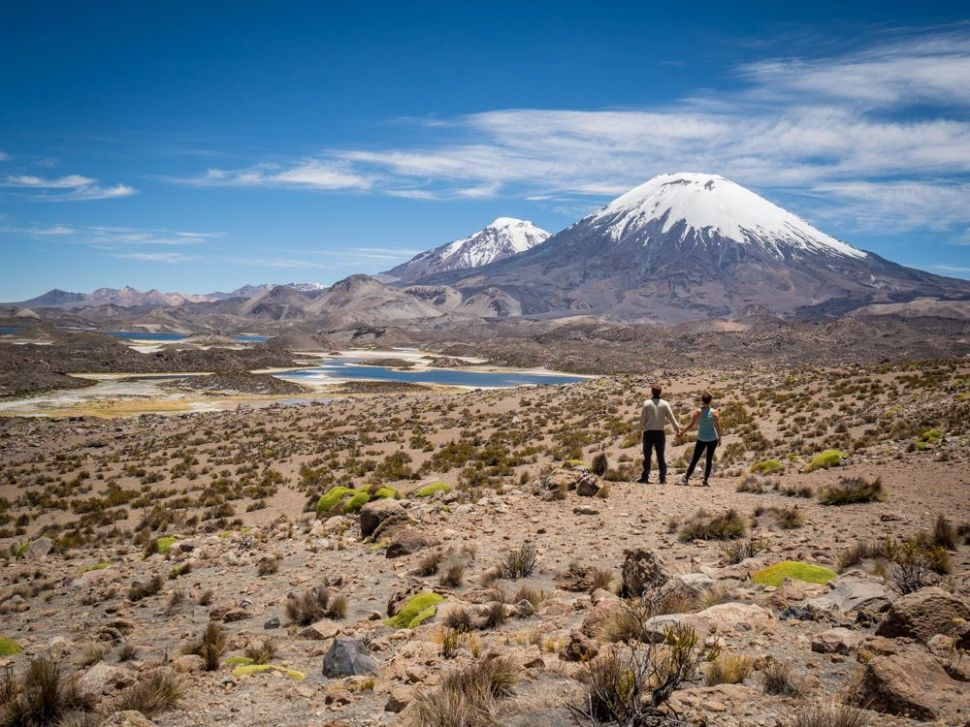
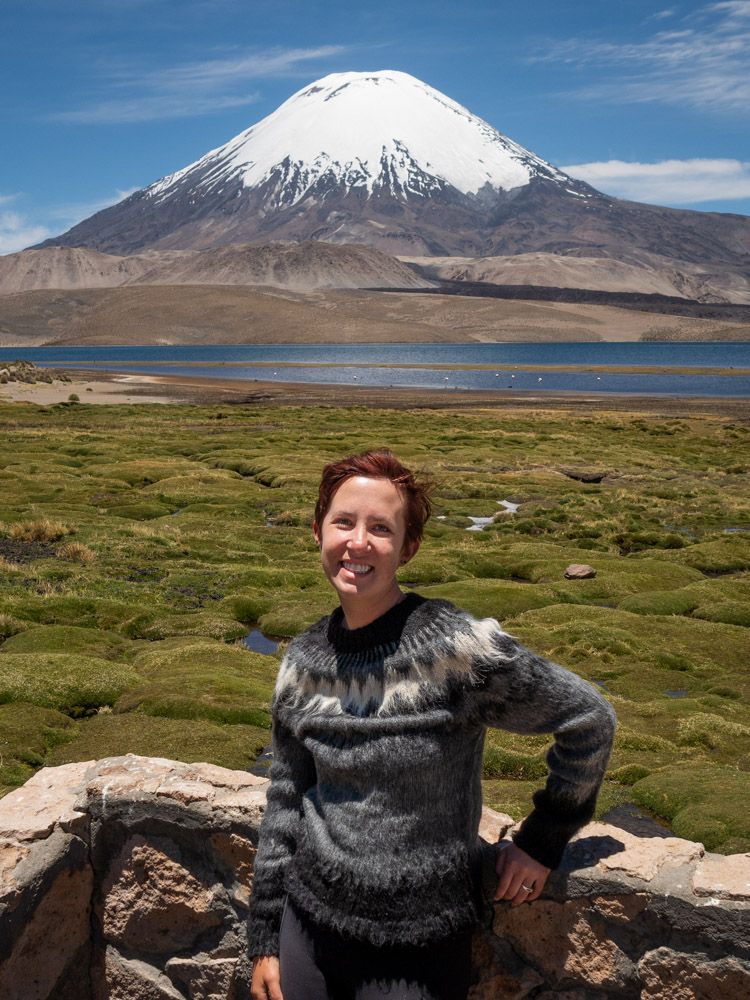
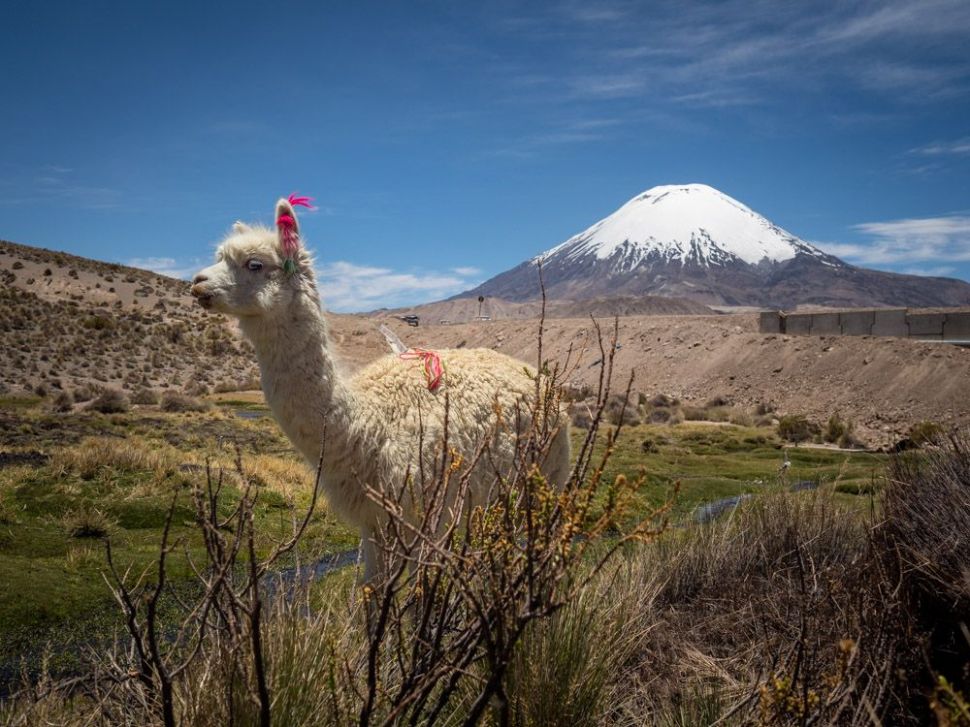
We returned to Putre than evening for a fun night back at the hostel, and prepared for another drive the through park and beyond. It was Thanksgiving and we settled in for some tomato soup, toast, and olives paired with Gatorade. Sure, it wasn’t the best food we’d had for Thanksgiving dinner, but it will be one of the most memorable.

The following day we drove into into Reserva Natural Las Vicuñas—the nature reserve for vicuñas. Vicuñas are llama-esque, four-legged creatures with their own unique cute factor. Unlike their better known cousins, they’re completely undomesticated and roam free in family herds. Outside of the reserve, they are sometimes captured and shorn for their ultra-soft fur, which sells for thousands of dollars. Seriously. A scarf we saw for sale in Peru cost $3,000.
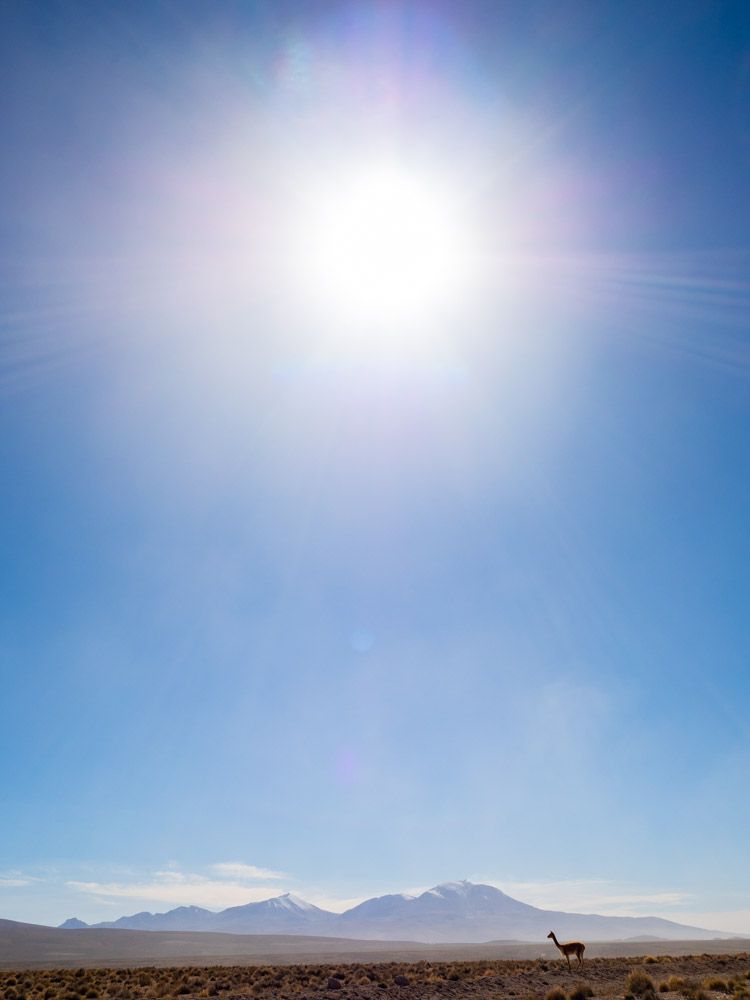
Driving south, we encountered a few nearly-ghost towns. There were a handful of small stones houses overgrown by high-altitude grasses invading the downways. Perhaps a house or two would be occupied, but these towns sat mostly vacant. We were told that the villagers were working in towns and cities, and they would all return to their waiting houses to celebrate certain festivals important to the town and culture.
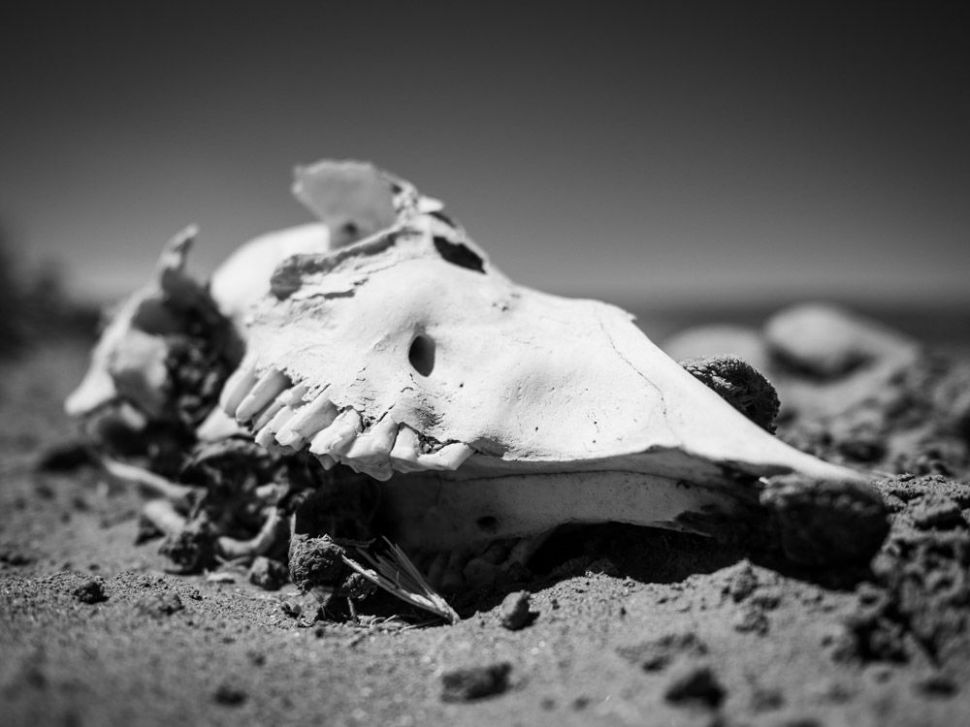
Our destination, provided we had enough diesel in reserve, was the enormous salt flat waiting at the southernmost end of the park. Upon arrival, we were disappointed to see a mining operation completely eclipsing what we could see of the flat. This felt like another nature-related disappointment, as we had already spent the past several hours of our drive searching for viscachas near the road. The viscacha, a rabbit-like creature related to the chinchilla, habitually sun out on large rocks in the altiplano, so we hoped we would see at least one from the road. We pulled off at a ranger station in hopes of asking for directions, and instead we found no people but a whole family of viscachas!
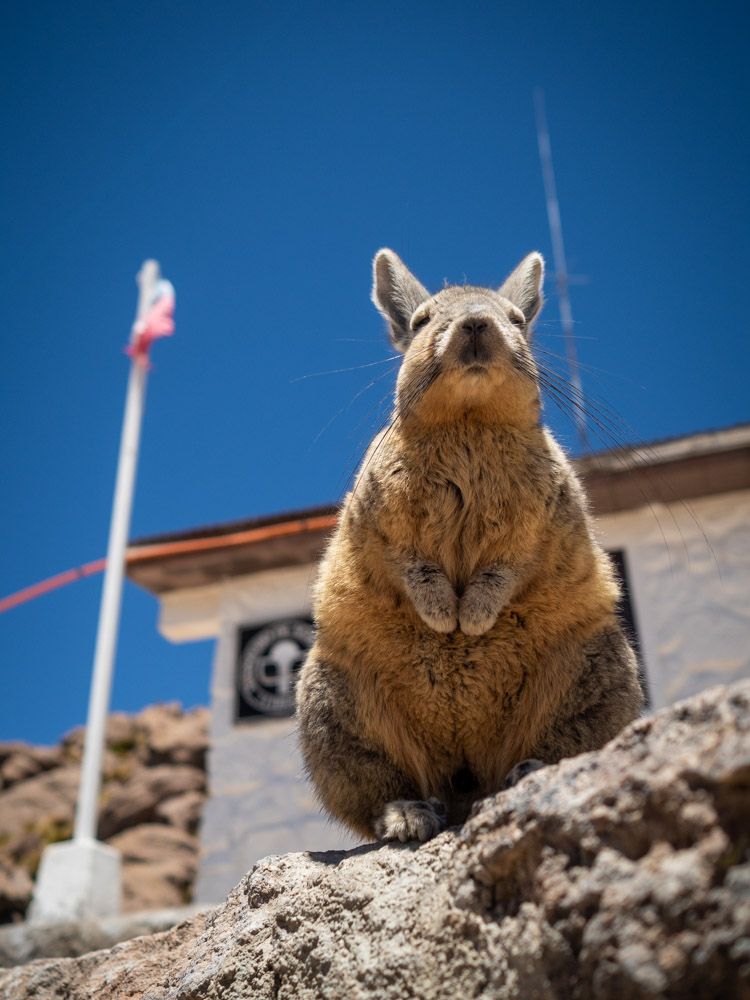
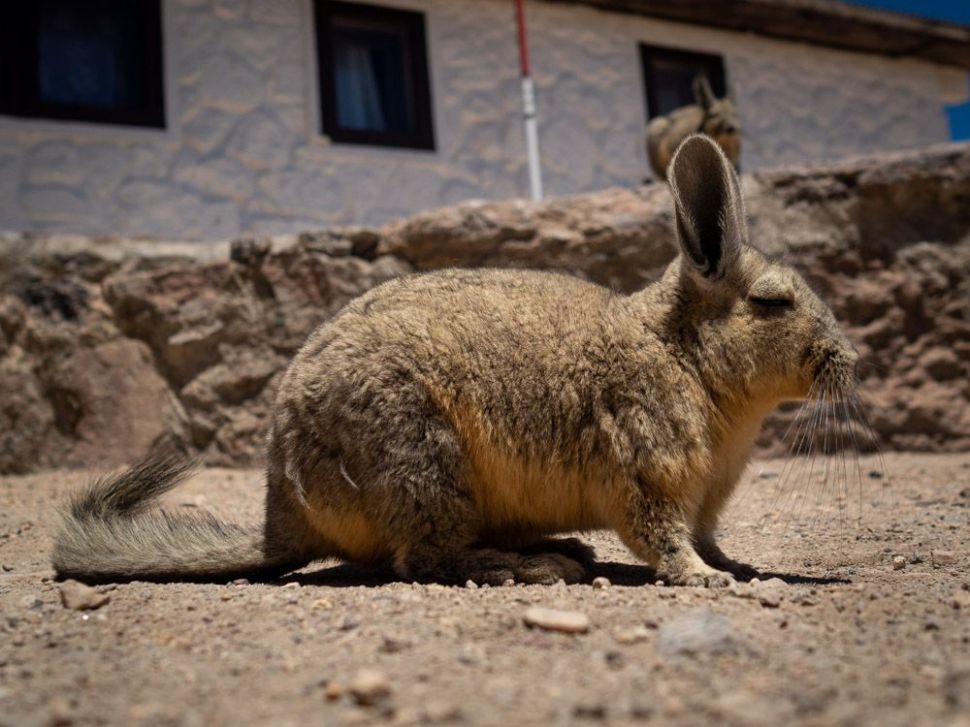
Our good fortune continued when we got back in the car. We drove to the opposite end of the salt flat from the mine, where we watched a variety of wildlife while standing against the harsh afternoon wind. Flamingos slowly waded and fed through the small pools on the flat. A herd of vicuñas traveled along the edge of the flat. Next to the herd, a mother Darwin’s Rhea—a giant bird, kind of like an emu—dashed across the flat with thirty baby birds following close behind. A distracted fledgling of the group wandered too close to the vicuãs and was met with some angry stamping. Frightened but unharmed, the little bird scurried away and ran to rejoin his family.
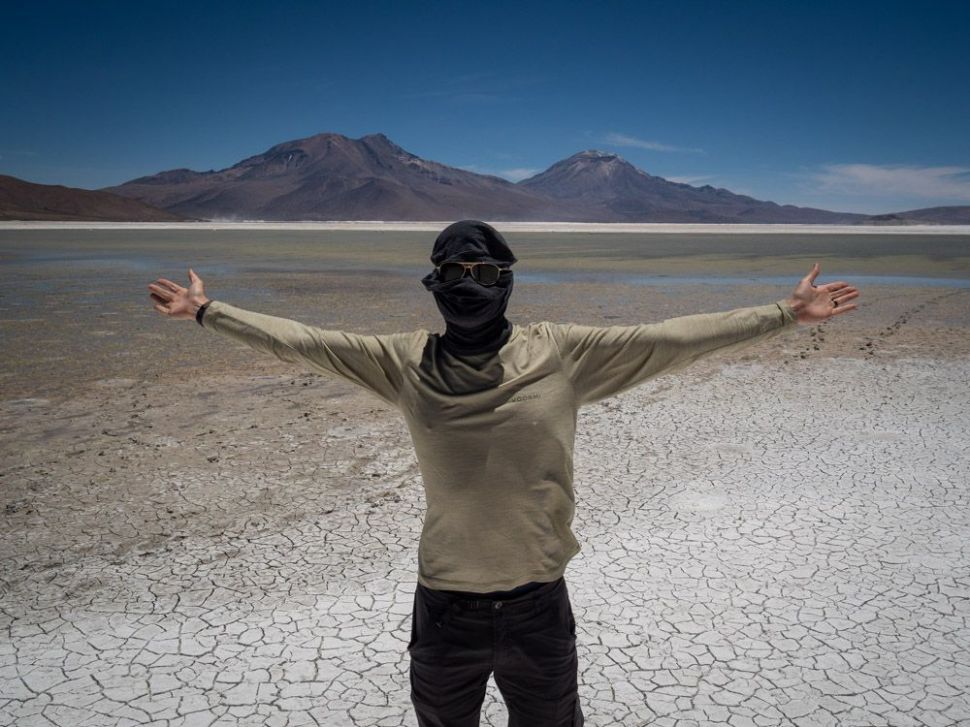


High from the beauty of the landscapes and the wildlife we’d seen, Lane reviewed the map, made a few more fuel calculations, and turned onto a even rougher, dirtier dirt road than what we’d been driving all day. At least one of the maps we possessed showed a somewhat “straight shot” to the next now, so off we went!
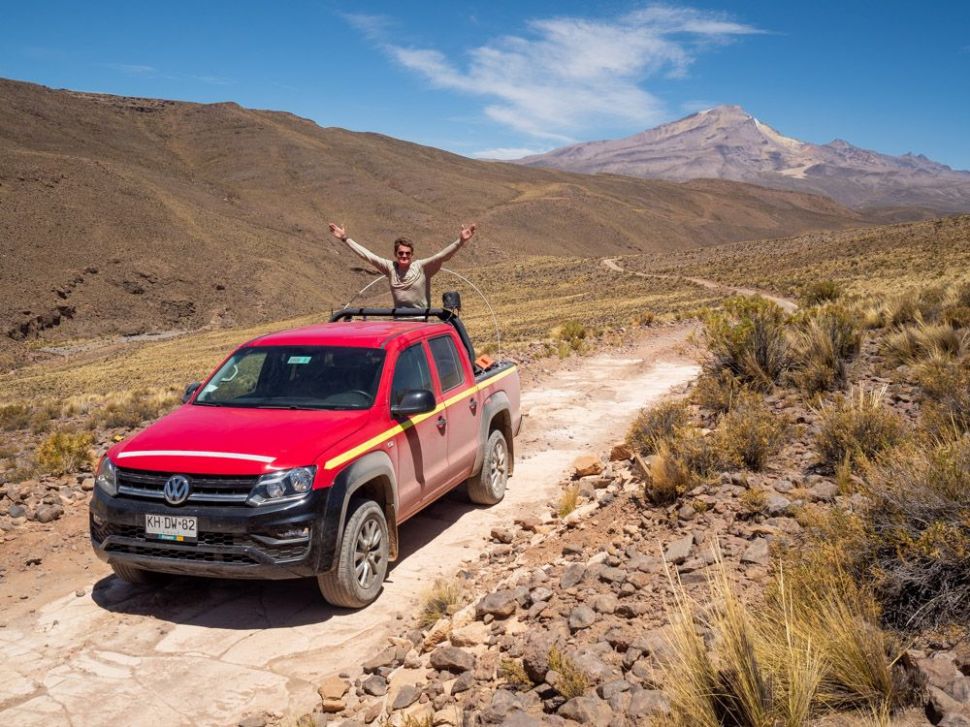
The road, which doesn’t show up on Google Maps, took over three hours to navigate. Without a doubt, we have never driven in such isolation before. If heart-racing drop-offs on much of the road weren’t unsettling enough, the seemingly endless miles of nothingness would do the trick to totally freak you out. As Lane expectly negotiated the rocky hairpin turns, he would excitedly proclaim, “WOW, I’ve never been this far away from civilization, we are in the middle of NOWHERE”. I calmly tried to insist, while nervously white-knuckling the door handle and screaming internally a little, we could discuss the crazy nothingness of our surroundings once we arrive at something. Yes, a much better conversation in the security of our hotel room. If we got to a hotel…
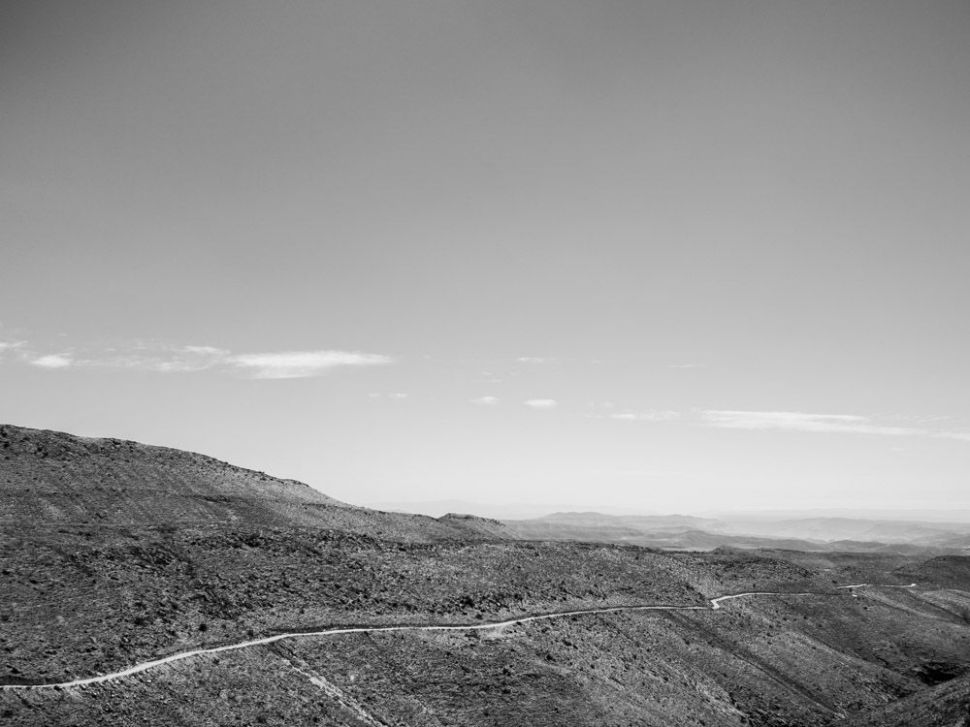
Eventually, we rolled into a tiny, but somewhat occupied town, of Codpa. The village sat in a narrow valley traced with steep, narrow roads each sitting above a lush, greenery. Lane actually found us a good deal on a room in the town a few nights prior and after some confusion we found the lodging. We unloaded our bags, hiked down to the main house, and, despite our best efforts, we couldn’t find the owner. I overheard a few kids laughing a little further down the trail, so I reviewed the Spanish sentences I would need to muster once I found them. Four children giggling while gathering eggs from coops twenty feet above the trail where I stood. I called up, hand cupping my mouth and said something like this, “Hello, do you know where the owner of the hotel is?”. The children looked to one another and returned their attention to me coolly.
“The owner isn’t here”
“Do you know where the owner is?”
“She’s in Arica” (see, I told you everyone is in Arica)
“Oh, can anyone help us? We have a reservation”
At this point, I’m sure the children were confused given that they were the only ones around and we not the owners of the hotel, so no, there wasn’t around to help us.
Despite our months of travel, we’d experienced very little in the way of rooming issues. We were perplexed as to why the owner wouldn’t be here despite our reservation days before. A quick look back at our emails revealed the answer. Apparently it doesn’t help much when reservations are made for the day after you actually planned to arrive. Oops.
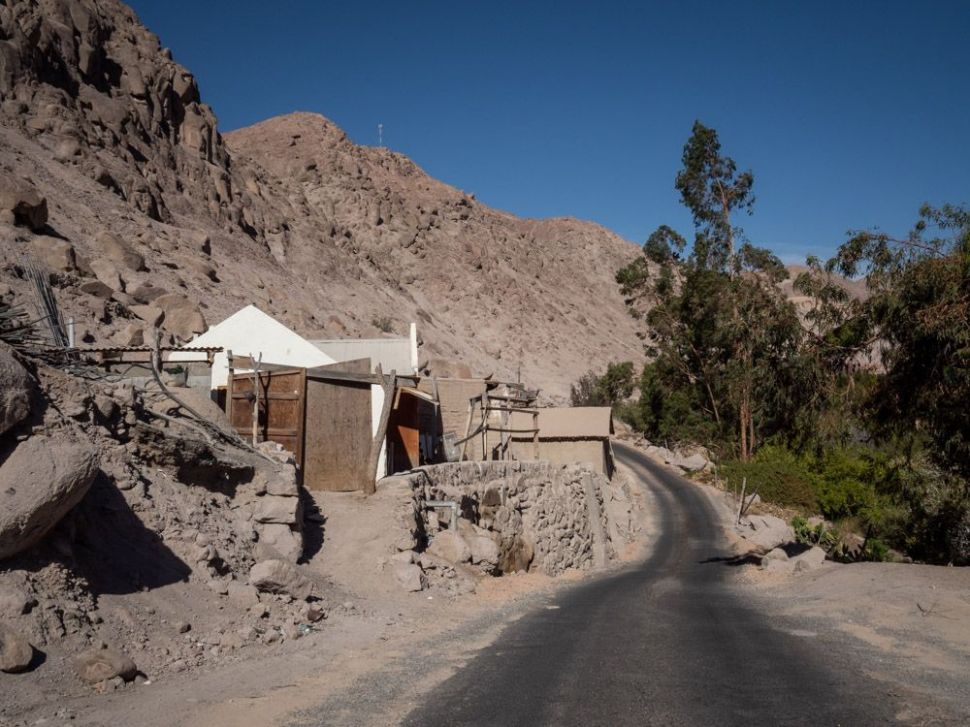
Thus we traversed the narrow roads around town trying to find the few remaining lodgings to stay the night. Surprise, none to be found. Along the way, we did meet several friendly locals who seemed confident the owners were just a few streets over in houses we could never find. Alas, the most expensive hotel was open and ready for guests. A guy with long hair and a respectable beard, wearing the kind of lightning and wolf t-shirt found at gas station, ushered us into the office. Unfortunately, we dropped about $100 for this room—by far our most expensive room of the trip so far. Given the waning daylight, we knew staying here was the smart decision (even if the advertised swimming pool was currently bright green).
This strange desert resort has also gone down in our RTW-trip superlatives, as Shockiest Shower Ever. Each time you wanted to adjust the water temperature, the current discomfort of the water—freezing or scalding—needed to be weighed adjust the discomfort of a pulsing and seizing forearm from being electrocuted. It’s not unusual for showers to not be properly grounded in Latin America (what a great way to wake up in the morning!), but this one really gave you a jolt.
For dinner, I borrowed some dishes from the resort and prepared our patios table while Lane refilled the truck with diesel from our jerry-cans and washed away the desert with his shocking shower. Reviewing what should be left from our major grocery haul back in Arica, I calculated we would actually have a decent dinner’s worth of food remaining. Unfortunately, a few key ingredients of this dinner were mistakenly left behind at the hostel in Putre. So we settled in for a dinner of banana, Nutella-ish substance, and a packet of delicious almonds. From the patio, we watched the owner and his hippie-presenting son assembling a large Christmas tree from lights, the kind with a center pole and a string of lights stretching the the ground. I laughed, remembered it’s almost Christmas as the sun sets on our summer night at 9:00pm.
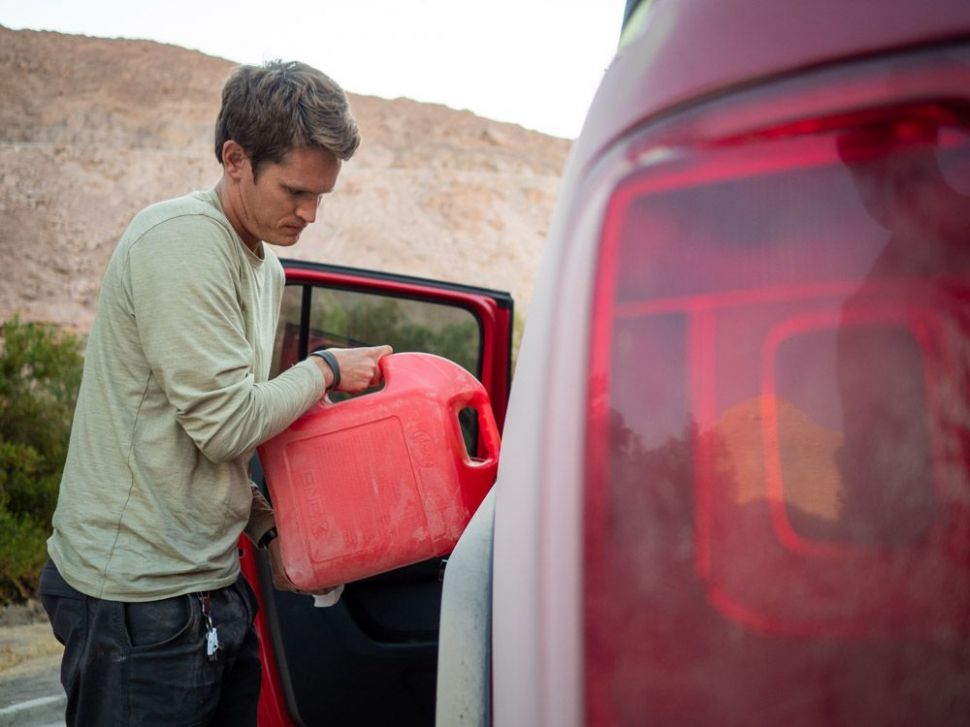
The next day, we gratefully eat the typical Chilean breakfast provided—instant coffee, fresh juice, round bread served with your choosing and combination of butter, marmelade, cheese, and jam. We spent the morning walking through small town of Copda, our home for about twelve hours. We visited a small church with many holes in the roof. At first I feel saddened by this evident disrepair, then I remember a few holes in the roof isn’t as much of a problem as we are in the middle of the driest desert in the world. Locals seem a little confused by our presence, but, honestly, we see very few people at all. We climbed an overlook of the town next to a giant cross and Virgin Mary statue and decide it’s time to depart for our next town.
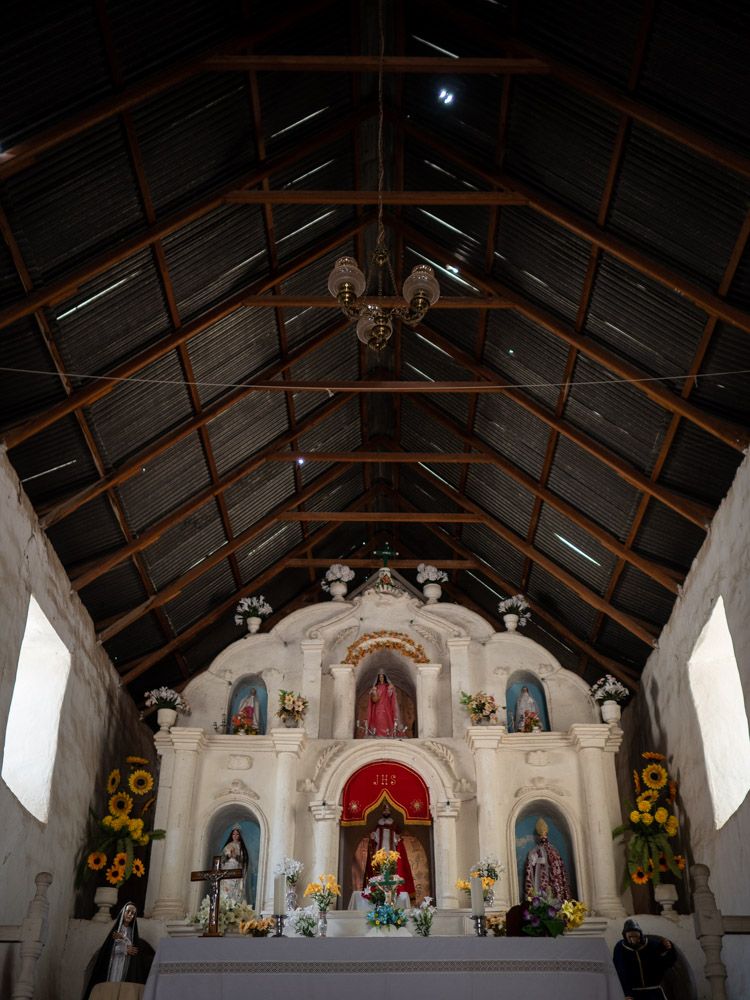

The dirt road we’d grown so accustomed to abruptly met asphalt and we welcomed the speed and comfort it provides. We zoomed down the Pan American highway (or “Pan Am”) while I think about how crazy it is being here, on the Pan Am with my husband, driving a big manual, diest truck, with a decent grasp of Spanish in our heads. Just one of the many things I never imagined when we got married. For the last thirty minutes towards our next destination, I turned on a Freakonomics podcast episode about cheeseburgers. This was a huge mistake as suddenly we craved nothing but cheeseburgers and I doubted our chances of finding a decent one anytime soon. We drove down yet another insanely steep Chilean coastal road towards to the small coastal town of Pisagua. Oh Pisagua. Such a strange, yet magical place. Full of hope and suffering, struggle and peace. Our visit—and subsequent return—to Pisagua is a story worth it’s own post.
After Pisagua, we hopped back on the Pan Am highway, aimed south towards a legendary ghost town and the first gas station we’d seen in days. We’d run out of diesel in jerry cans, and gas stations are only found in the large cities. Making sure you have a full tank is crucial when driving this remote part of the world.
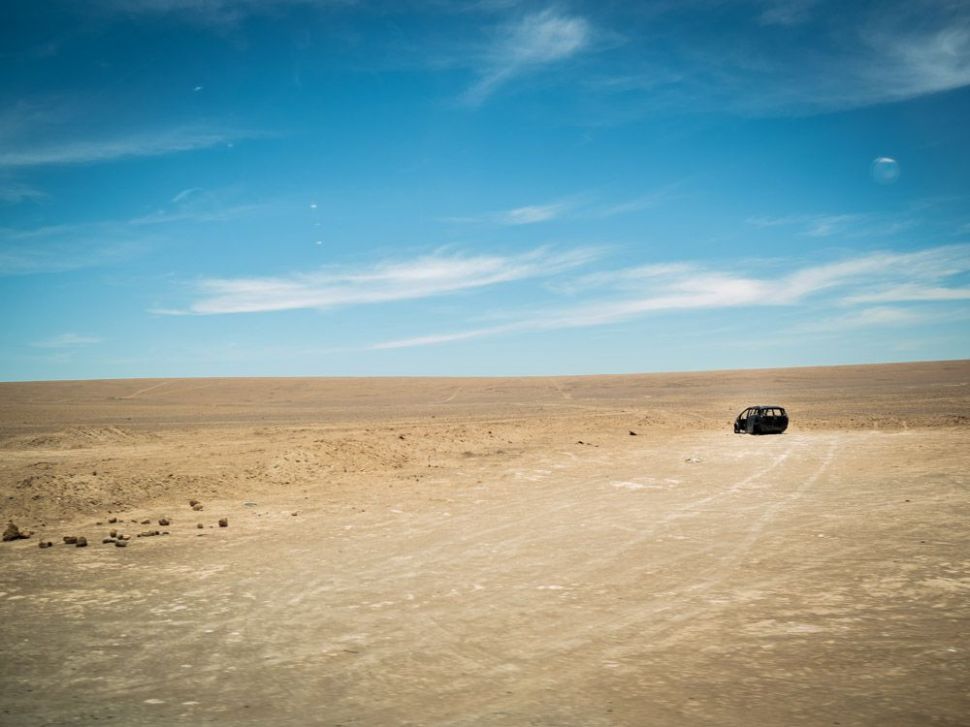
A ghost town, Humblestone, loomed ominously near the highway as we excited took the exit. The company town is one of many artifacts left behind of Chile’s nitrate boom starting in the 19th century and spanning a good portion of the 20th century. Northern Chile rose and fell from prominence by the money and power created by its nitrate mines. The historic site allows a peek into the evolution of the town as well as daily life. We explored old family housing, the hospital, dentist, theatre, and countless other beautiful structures slowly eroding under the harshness of the Atacama sun. Given my love for all things antique, a nearly intact antique town was a dream come through. I took way to many pictures.

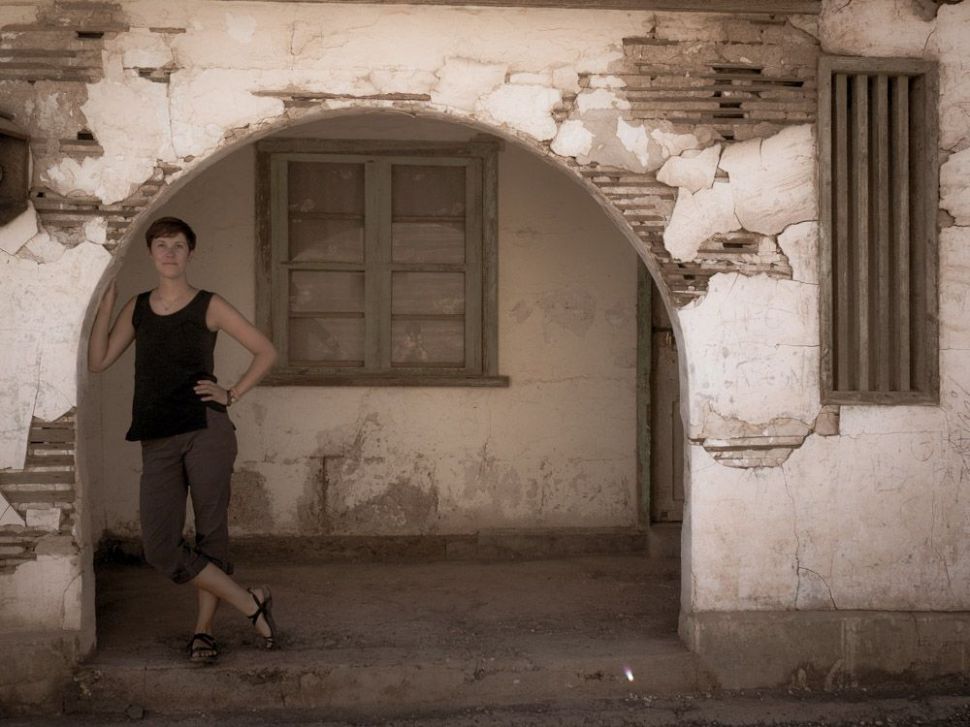

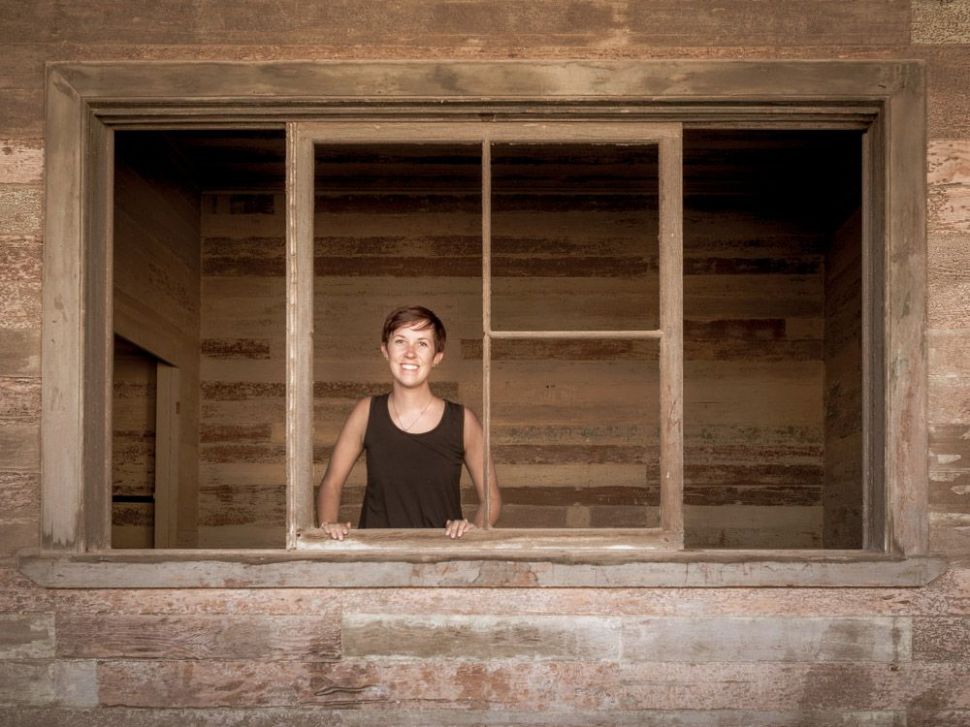
That evening brought us to another astoundingly beautiful, steep Chilean coastal road leading to the city of Iquique. It’s supposed to be one of the best places in the continent, if not the world, to paraglide—if this gives you any indication of how dramatic the drop from the desert to the beach city might be. I snagged a great deal on a hotel, and for $13 we stayed on the 19th floor of a beautiful hotel right next to the beach (parking included). We found dinner just a few blocks away and hungrily devoured cheap shawarma and falafel from a small restaurant, happy for our first big meal of the day and first good meal since we left Arica.
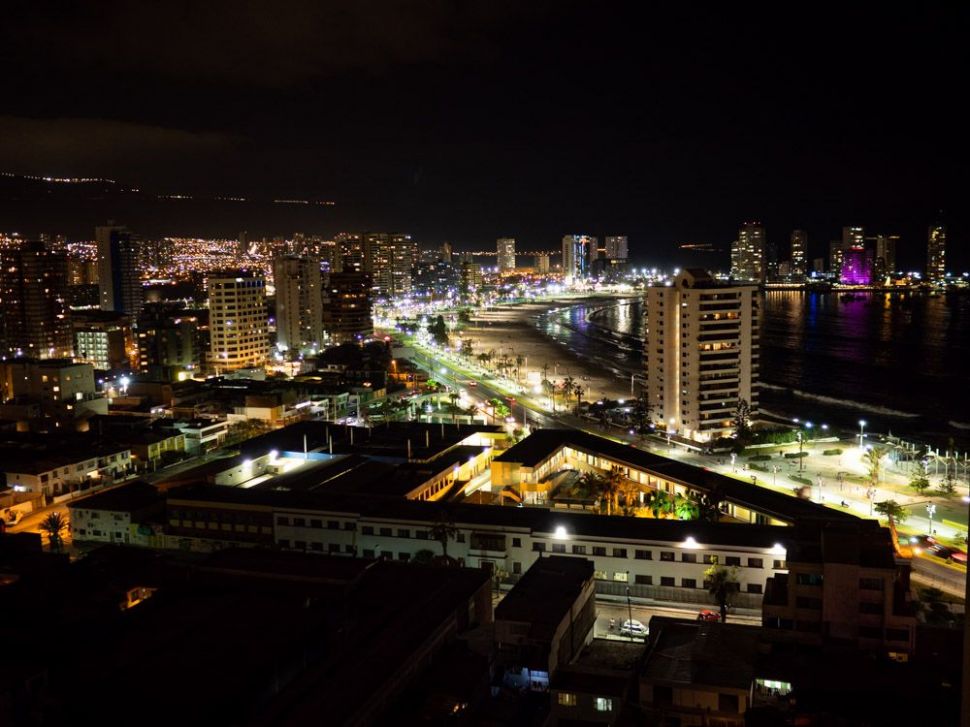
Although the journey to Iquique had been a long one, the Pan Am would lead us straight back to Arica to return the truck, after a stop at the gas station of course. So we headed back. Lane and I have always loved road trips, and I think in some ways we fell in love on long car rides across Texas, and further in love on trips throughout the US. As we drove out of are Iquique, paragliders swirling alongside the highway, we revelled in the freedom of these past days. Not being tied to a Latin American bus schedule—I use the term “schedule” with hesitation—brought us a levity sometimes difficult to find while on the road. So we enjoyed the comfort and familiarity of our long drive, soaking in our mutual love for road trips and each other, and steered the car north.
